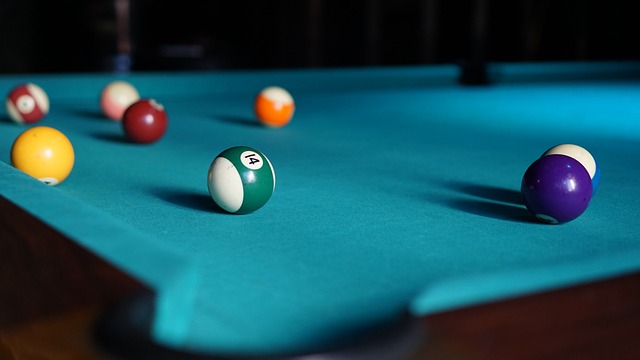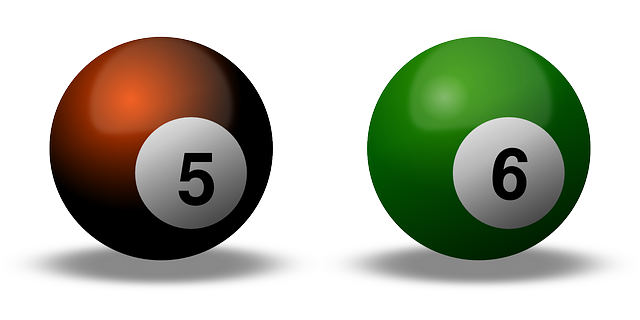Pool tables vary greatly in weight, typically ranging from 60 to 250 kilograms (or 300 to 1000 pounds), with factors like size, wood type, design details, and accessories determining this. Standard 8-foot tables weigh around 600-700 pounds, while larger models can exceed 1000 pounds. Heavier tables offer enhanced stability for precise shots in competitive settings.
A pool table isn’t just a game of stripes and solids; it’s a complex structure designed for precision and durability. So, why is it so heavy? This article delves into the world of pool tables, exploring the key components and materials that contribute to their substantial weight. We’ll dissect the construction process, uncovering how every step impacts the final weight, and uncover the factors that affect not just the table’s stability but also the player experience. From leg designs to slab thickness, discover what makes a pool table both sturdy and a centerpiece in any game room.
- Components and Materials: Exploring the Weighty Elements
- Construction Process: Assembly and Its Impact on Weight
- Factors Affecting Table Weight and Player Experience
Components and Materials: Exploring the Weighty Elements

Pool tables are known for their sturdy construction, and one of the primary reasons they’re so heavy lies in their components and materials. The frame, typically made from robust metals like steel or iron, forms the backbone of the table and contributes significantly to its weight. These materials ensure stability and strength, enabling the table to withstand intense play without compromising structure.
The playing surface, often a seamless piece of high-quality cloth, is another factor. While it may seem light, the tight weave and thick backing add substantial mass. Moreover, the pockets, cushions, and balls themselves also contribute to the overall weight. These elements work together to create a durable table that can last for years with proper care, answering the question: “How heavy is a pool table?” with a range typically between 300 to 1000 pounds, depending on size and design.
Construction Process: Assembly and Its Impact on Weight

The construction process of a pool table significantly contributes to its overall weight, which is often a surprising factor for many. These tables are not mere pieces of furniture but intricate works of craftsmanship. The assembly involves multiple layers and components carefully brought together to create a sturdy playing surface.
First, the frame, typically made of robust materials like wood or metal, serves as the backbone. It undergoes precise cutting and joining to form a strong structure that can withstand the rigorous play sessions. On top of this frame, several layers of wood are carefully laid down and glued, creating the table’s playing surface. The choice of wood varies, with different species offering unique properties; some ensure a smooth texture, while others add to the overall weight. After the wood layers are secured, additional components like pockets (for balls) and the net are attached, further increasing the table’s mass. Finally, the finishing touches, including coating and polishing, contribute to both the aesthetics and, in some cases, adding protective layers that also add to its weight. Given these factors, it’s no surprise that a standard pool table can weigh between 60 to 250 kilograms, with larger or custom-made tables often exceeding this range.
Factors Affecting Table Weight and Player Experience

The weight of a pool table varies depending on several factors, directly impacting the player experience. Larger tables tend to be heavier due to their increased size and the materials used in construction. For instance, a standard 8-foot table weighs around 600-700 pounds (272-317 kg), while a massive 9-foot or 10-foot table can tip the scales at over 1000 pounds (453 kg). The type of wood used also plays a significant role; denser woods like maple and cherry contribute to a heavier table.
Additionally, the table’s design and features affect its weight. Inlaid designs, intricate leg structures, and even the addition of accessories like ball holders or racks can add considerable mass. Heavier tables often provide more stability during play, reducing wobble and ensuring a smoother experience for players aiming for precision shots. This stability is particularly important in competitive settings where every fraction of a second counts.
A pool table’s substantial weight, often exceeding 600 pounds (272 kg), stems from its intricate construction and high-quality materials. Each component, from the slate bed to the legs and accessories, contributes to its overall heft. Understanding these elements is key to appreciating not only the durability but also the meticulous craftsmanship that goes into creating a pool table. When considering “how heavy is a pool table?”, it’s evident that the weight enhances player experience by providing stability and a solid playing surface, making every shot more precise and satisfying.
